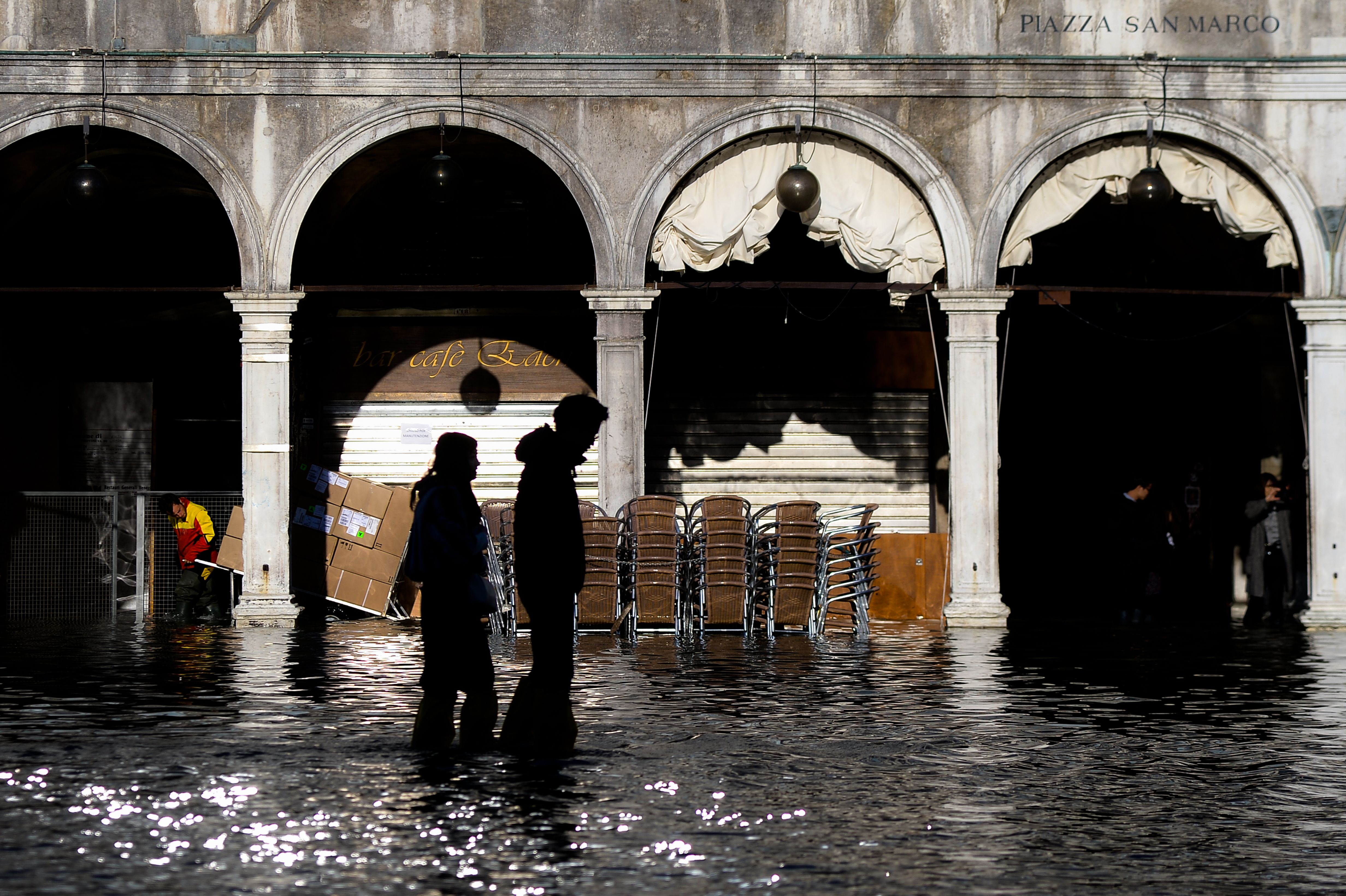
Though Italy is gearing up to declare a state of emergency over the flooding that has engulfed Venice in the past two days, many of the city’s art institutions have somewhat miraculously reported that their artworks are unscathed, with minimal damage to building infrastructure.
The Venice Biennale, in particular, fared remarkably well. Despite forecasts predicting continued flooding through November 16th, the Arsenale and Giardini reopened to the public this morning, confirming an impressive 2,582 visitors by closing time.
The Biennale’s national pavilions are a bit spottier: the pavilions of Iraq, Arab Syrian Republic, Pakistan, Bosnia-Herzegovina, Cyprus, New Zealand, Romania, and Iceland are all currently closed until further notice.
Other institutions have been lucky. The Accademia, the Ducal Palace, and the Correr Museum all confirmed that no works of art had been damaged. While the Accademia was able to reopen its doors today, the latter two institutions—both located in the hard-hit St. Mark’s Square—are closed for the time being.
A general view shows the Doge’s Palace overlooking the flooded St. Mark’s Square, the Lion of St. Mark winged bronze statue [center], gondolas and the Venetian lagoon during the floods on November 13 in Venice. Photo by Marco Bertorello/AFP via Getty Images.
The safety of Venice’s extensive art collections comes in contrast to widespread descriptions of general devastation. According to the BBC, more than 80 percent of the city was underwater at high tide, with waters reaching up heights up to 6 feet.
Additionally, the United Nations announced that their UNESCO World Heritage team is “closely monitoring the state of conservation of the World Heritage Site of Venice and its lagoon,” adding that “the site is also highly vulnerable to the negative impacts of climate change.” In a tweet yesterday, Luigi Brugnaro, mayor of Venice, cited climate change as the root cause of the disaster.
A view inside the flooded St. Mark’s Basilica during the floods on November 13 in Venice. Photo by Simone Padovani/Awakening/Getty Images.
Meanwhile, there’s no lack of art at the Venice Biennale that attempts to shine a spotlight on this hot-button issue. That includes the Golden Lion-winning Lithuanian Pavilion, titled Sun & Sea (Marina), which Artnet News’ Julia Halperin called “a subtly unnerving performance about the laziness that leads to the end of the world.” The presentation took the form of a live opera performed by a cast which, during a day out on an artificial beach, sang about the slight yet ultimately dire shifts caused by climate change.
“We see the effects of climate change far away from where we are, and we turn away,” the pavilion’s curator, Lucia Pietroiusti, told Artnet News. “The same effects get closer, and we call them ‘events,’ expecting everything to return to normal some time soon. This is just another way of turning away: away from the unfathomable at our doorstep. The climate disaster is a problem of the economy, colonialism, politics, infrastructure, and also of imagination. We did once learn that the earth was not at the centre of the universe. Embodying and embedding a deeper ecological consciousness, realizing that we are enmeshed in–and not at the center of–this planet is equally possible.”